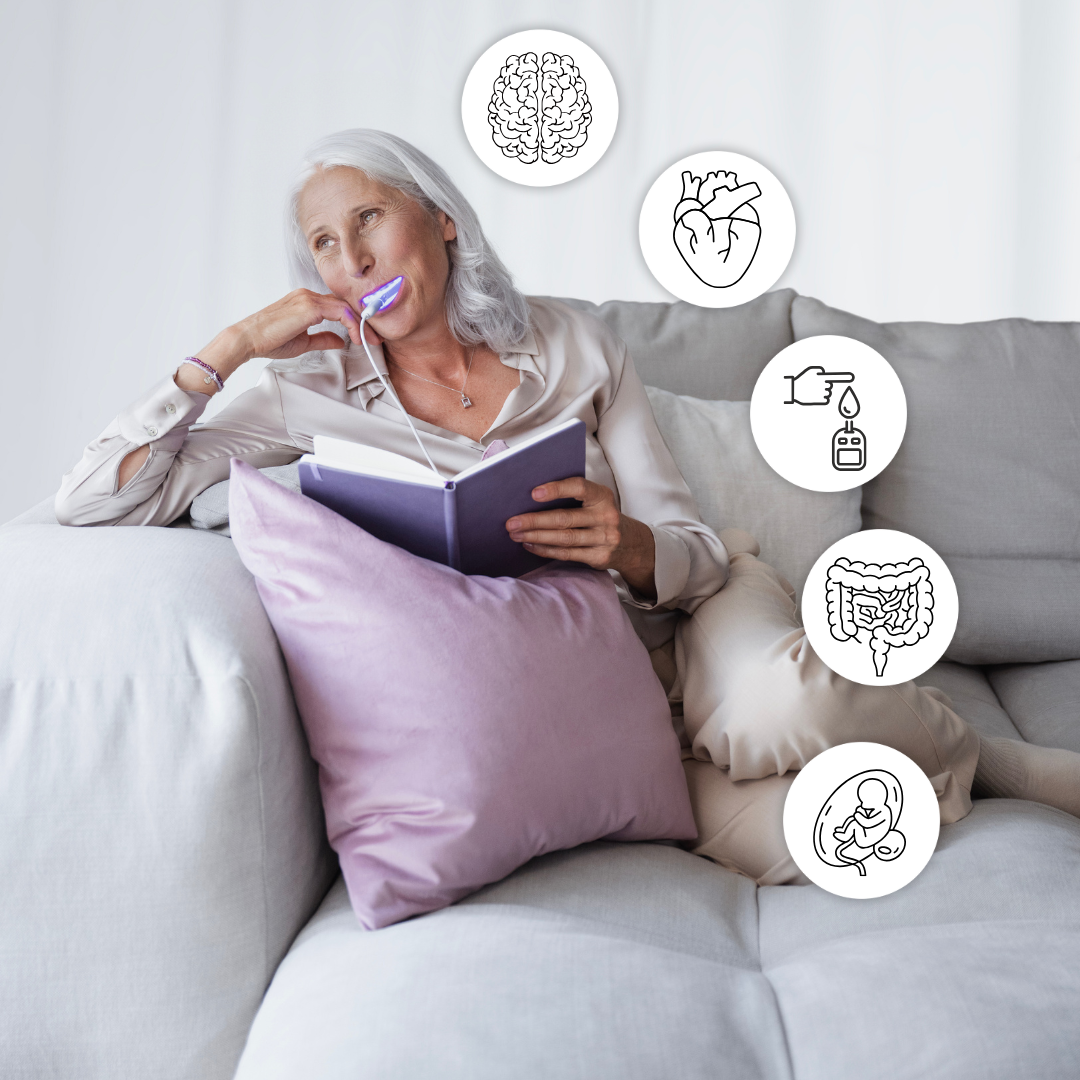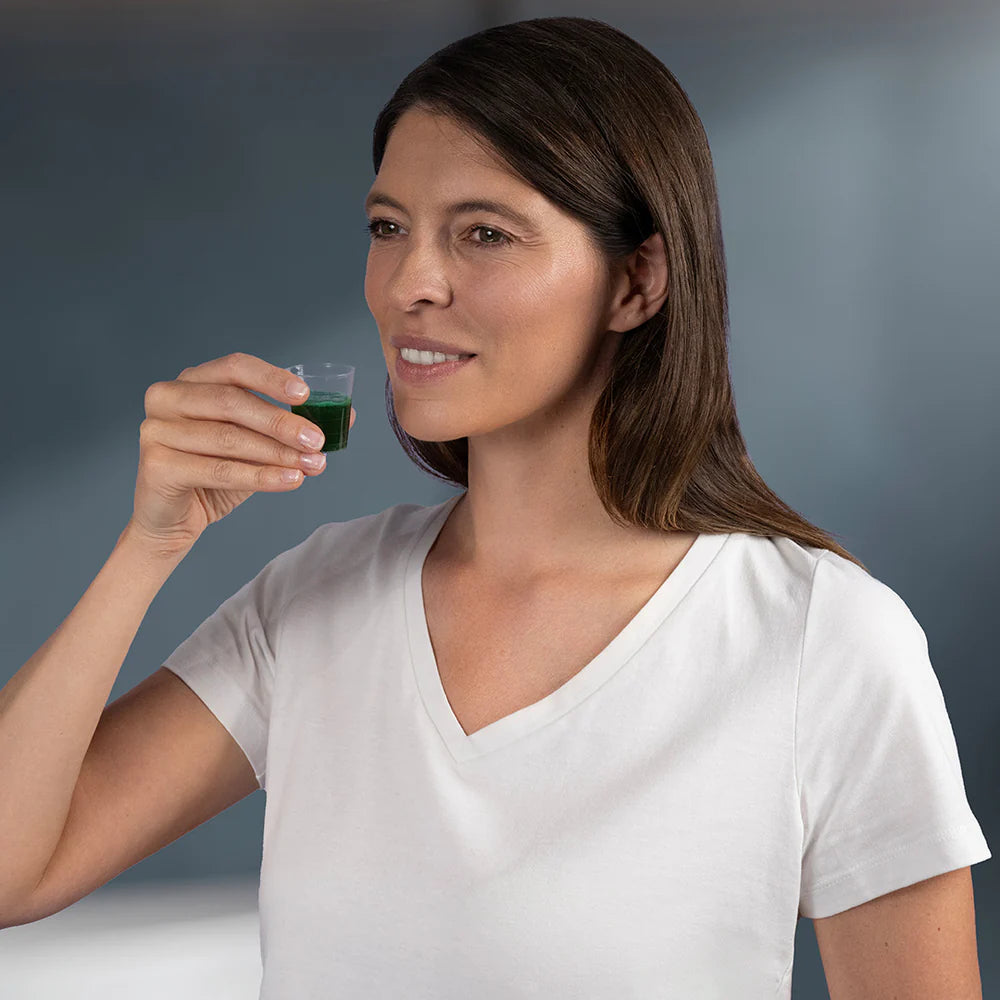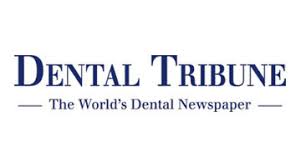Det gør Lumoral:
Tandsten opstår, når plak (biofilm) hærder ved kontakt med spyt. Den ru overflade tiltrækker flere bakterier, som kan irritere tandkødet og føre til betændelse, caries og paradentose. Lumoral reducerer effektivt plak med avanceret antibakteriel lysteknologi og forebygger dermed både tandsten og bakterierelaterede tandsygdomme.
Lumoral forebygger tandsten ved målrettet at nedbryde plak med lysaktiveret antibakteriel teknologi, der når områder tandbørsten ikke kan. Den destabiliserer biofilmen, reducerer skadelige bakterier uden at forstyrre mundens mikrobiom, og styrker effekten af tandlægens behandling. Teknologien er klinisk dokumenteret, resistensfri og et effektivt alternativ til traditionelle mundskyl.
Caries (huller i tænderne) opstår, når bakterier nedbryder tandemaljen og danner huller. Når bakterier blandes med sukker og kulhydrater, dannes syrer, der sænker pH og opløser emaljen. Plak, hyppige snacks og søde drikke øger risikoen, mens spyt normalt hjælper med at neutralisere syrerne. Bakterien Streptococcus mutans er den mest almindelige årsag. Risikoen varierer fra person til person og er ofte symptomfri.
Lumoral forebygger caries ved effektivt at reducere skadelige bakterier og er et særdeles vigtigt supplement til tandbørstning – især hos personer med Streptococcus mutans.
Lumoral reducerer og behandler betændelse i tandkødet. Lumoral fjerner bakterier, der forårsager tandkødsbetændelse, fra tændernes overflade og stimulerer mundvævet, hvilket fremskynder dets heling. Regelmæssig brug af Lumoral reducerer ophobning af plak og tandsten. Ophobning af plak og tandsten på tandkødsranden og mellem tænderne er en almindelig årsag til tandkødsbetændelse.
Lumoral bekæmper skadelige bakterier i plak, fremmer heling og beskytter den naturlige bakterieflora. Studier viser at daglig brug kan forbedre tandkødsheling med op til 220 % og reducere plak med over 50 %.
Parodontitis opstår ved plak, tandsten og betændelse og kan føre til tandtab. Symptomer: rødt, hævet tandkød, blødning, tilbagetrukket tandkød, løse tænder og dårlig ånde. Ubehandlet øger det risikoen for hjerte-kar-sygdomme og diabetes.
Parodontitis diagnosticeres af tandlægen og bør behandles hurtigt, da sygdommen også øger risikoen for alvorlige helbredsproblemer som hjerte-kar-sygdomme og diabetes.
Anaerobe bakterier, der ophobes på tændernes overflade og langs tandkødsranden, udskiller ildelugtende gasser. Lumoral fjerner skadelige bakterier fra munden og giver frisk ånde.
Lumoral-metoden fjerner effektivt pletter forårsaget af plak og efterlader renere tænder.
Den grundlæggende årsag til problemerne er plak
Selv den bedste elektriske tandbørste fjerner kun ca. 65 % af plak. Resten hærder til tandsten og kan føre til tandkødsbetændelse. Faktisk er op til 95 % af alle mundhygiejneproblemer forårsaget af plak.
Lumoral® blev udviklet for at tackle den grundlæggende årsag: hvordan man fjerner plak mere effektivt, sikkert, nemt og omkostningseffektivt. Resultatet er Lumoral® – et CE-mærket medicinsk udstyr designet af Harri Koskinen.
Billede: Efter tandbørstning kan tænderne se rene ud med det blotte øje (venstre). Nær-infrarødt lys afslører dog, at der stadig er meget plak på tænderne (højre).

Before

After
Nem og sikker at bruge
Undersøgelser viser, at jo mere regelmæssigt du bruger Lumoral®, desto bedre bliver din mundhygiejne. Vi anbefaler at bruge Lumoral® to gange om ugen i 10 minutter ad gangen. Du kan se tv eller lave aftensmad på mens behandlingen er i gang.
Hvis du har symptomer på tandkødsbetændelse, anbefaler vi midlertidig daglig brug i to uger for mere effektive behandlingsresultater. Hvis symptomerne fortsætter, skal du kontakte din tandlæge.

Lumorinse®
Den overlegne antibakterielle effekt af Lumoral® bygger på den lysaktiverede Lumorinse® mundskyl. Behandlingen fungerer kun i kombination med Lumorinse®, som binder til bakteriernes overflade, før lyset aktiveres. Det innovative mundskyl angriber plak på mikroskopisk niveau og beskytter samtidig mundens sunde bakterieflora.
Tidligere er lignende lysaktiverede antibakterielle behandlinger anvendt på tandklinikker, men høje omkostninger og hyppig brug har begrænset deres anvendelighed. Lumoral® gør teknologien effektiv og tilgængelig til hjemmebrug.

En effektiv og videnskabeligt dokumenteret metode
Lumoral®-mundskinnen anvender to typer lys: blåt lys (405 nm) og nærinfrarødt lys (810 nm). Kombinationen aktiverer Lumorinse® mundskyl, der indeholder indocyaningrønt (ICG).
ICG binder til bakterierne i plakken og forstærker fotoaktiveringen, hvilket udløser produktionen af reaktive iltarter (ROS) og varme. Disse fotokemiske og biologiske processer eliminerer plakbakterier med en præcision på 99,998 %.
Plakkens indvirkning på den generelle sundhed
Klik på "+"-tegnene nedenfor, og se, hvordan mundhygiejne påvirker den generelle sundhed.

Hjertesygdomme
Dårlig mundhygiejne, især tandkødsbetændelse (gingivitis), paradentose og ubehandlet caries, er blevet knyttet til hjertesygdomme som bakteriel hjerteklapbetændelse, myokardieinfarkt og hjertesvigt. Bakterier fra munden kan trænge ind i blodbanen gennem betændt tandkød og forårsage betændelse i arterievæggene.
Hjernens sundhed
En sund mund reducerer risikoen for hjerneinfarkt og hukommelsessygdomme som Alzheimers. Orale bakterier kan bevæge sig til hjernen og bidrage til betændelse samt blodkar-forandringer. For eksempel kan ubehandlet tandkødsbetændelse fordoble risikoen for hjerneinfarkt hos personer under 50 år.
Diabetes
Diabetes og paradentose påvirker hinanden gensidigt. Højt blodsukker øger inflammation i munden, hvilket hæmmer helingen af paradentose. Omvendt kan paradentose forstyrre diabetesbehandlingen og forværre blodsukkerreguleringen. Denne indbyrdes påvirkning afspejles i kroppens systemiske inflammatoriske markører.
Graviditet
Mundsundhed er særligt vigtig under graviditeten, da dårlig mundhygiejne kan være forbundet med for tidlig fødsel og lav fødselsvægt. De hormonelle ændringer, der sker under graviditeten, øger også risikoen for tandkødsbetændelse og caries.
Tarm
Fordøjelsesprocessen starter i munden, hvor god mundsundhed, sunde tænder og tilstrækkelig spytproduktion er afgørende for en effektiv fordøjelse.
En bakteriel ubalance i munden, kendt som dysbiose, kan påvirke tarmmikrobiomet og dermed hele tarmens sundhed.
Forbedret mundhygiejne er derfor en vigtig faktor i behandlingen af tarmsygdomme som IBD og Crohns sygdom.
Sådan fungerer det:
Bare tre trin
– resultater på kun 10 minutter to gange om ugen

1. Skyl
Skyl Lumorinse® mundskyl rundt i munden i 60 sekunder.

2. Lys
Placer mundstykket i munden, hvor det lyser i 10 minutter.

3. Børst
Børst dine tænder og nyd exceptionelt rene tænder.
Finsk innovation
Lumoral® er udviklet og produceret af den finske virksomhed Koite Health, hvor et ekspertteam af læger, ingeniører og kemikere står bag teknologien. Produktdesignet er skabt af Harri Koskinen.
Metoden bygger på tværfaglig forskning og solid medicinsk evidens. Både teknologi, produkter og anbefalinger er dokumenteret effektive og udviklet med fokus på høj brugervenlighed og sikkerhed til hjemmebrug.
Bestil nuLumoral tiltrækker sig udbredt international interesse, understøttet af stærk videnskabelig evidens og anbefalinger fra en voksende gruppe af mundhygiejneprofessionelle.

Ved at tilføje Lumoral-behandling til ens normale mundhygiejnerutine kan man undgå behovet for større tandbehandlinger i fremtiden.

Fotodynamisk terapi med dobbelt lys hjælper med at dræbe bakterier i munden

Antibakteriel lysaktiveret terapi forbedrer mundhygiejnen. Det kan også øge mundfugtigheden, da mundtørhed er almindelig hos ældre personer med flere lægemidler.

En vigtig fordel ved denne antibakterielle metode er dens selektivitet. Lumoral er primært rettet mod skadelige orale bakterier, i modsætning til andre antimikrobielle mundskyllemidler såsom klorhexidin.

Verdens mest almindelige sygdom koster 500 milliarder om året – finsk opfindelse behandler den med 99,998% effektivitet


